Darren Appiagyei is a London UK-based woodturner. He graduated from UAL Camberwell College of The Arts, where he studied 3D design in 2016. Darren’s work is about highlighting the intrinsic beauty of the wood and celebrating features such as knots, cracks, bark, or distinctive grain, which are often seen as flaws. He works only with wood from fallen trees that would otherwise be chopped up for firewood. We caught up with Darren to find out more…
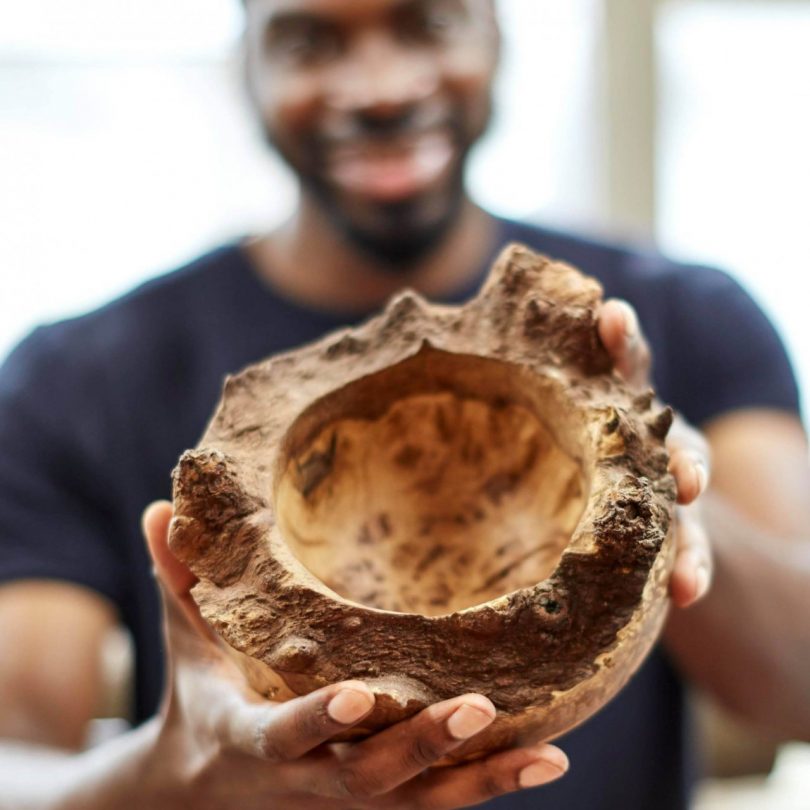
Tell me a little bit about your childhood, education, and background in terms of how you first became interested in creativity, design, and sustainability.
I was born in London to Ghanaian parents, who were very invested in the Ghanaian culture, so my childhood home was adjourned with traditional Ghanaian objects such as the Ashanti stool and the neem wood sculpture. I was very much a creative person in my own little way, I would endlessly draw for hours patiently shading and dotting away. I continued to be creative into my GCSEs and A-levels. It was at University where I developed a sense of direction; I studied 3D design at UAL Camberwell College of the Arts – in my second year we had a unit where we had to learn a new skill and I gravitated towards the lathe, which was hardly used. Learning how to turn was a gradual process of learning and developing with the help of YouTube and the university technicians. Through trial and error, I slowly gained a real appreciation for wood and its grains and textures. I fell in love with the material – I was absolutely spellbound as the wood revealed itself to me as I carved. My interest in sustainability developed as I researched a variety of woods further and understood their properties, depending on where the wood was sourced as well as the difference between trees that had naturally fallen and trees that have deliberately been cut. Once I graduated, I won The Worshipful Company of Turners and Cockpit Arts Awards in 2017 and started to develop a sustainable practice. I was introduced to Woodlands Farm in Shooters Hill, from which I source my wood, only using wood from fallen trees.
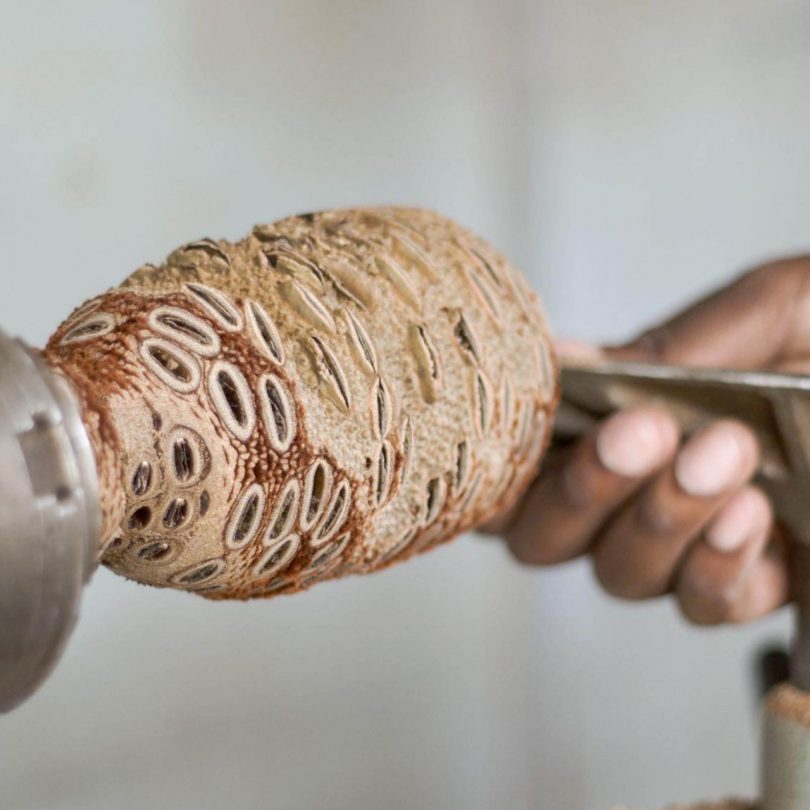
How would you describe your project/product?
Making with wood is a collaboration between me and the material. It’s an honoring of the intrinsic beauty of the wood; it’s all about allowing the wood to speak for itself rather than refining and polishing it into something it’s not. Enhancing the imperfections of the wood, my approach is simply about allowing the organic beauty of the wood to shine, whether it be a grain, a knot or just the texture of the wood. Every vessel is a representation of the beauty of wood in its natural state. I like to think of my work like people – everyone is different in their own way, with unique experiences and this is what makes both people and wood so special, every piece is so different even if it’s the same species. I work with a variety of woods; from oak burr – which is a diseased part that has to be cut off oak trees so it won’t cause the whole tree to rot – to spalted beech which has a highlighted element caused by fungi.
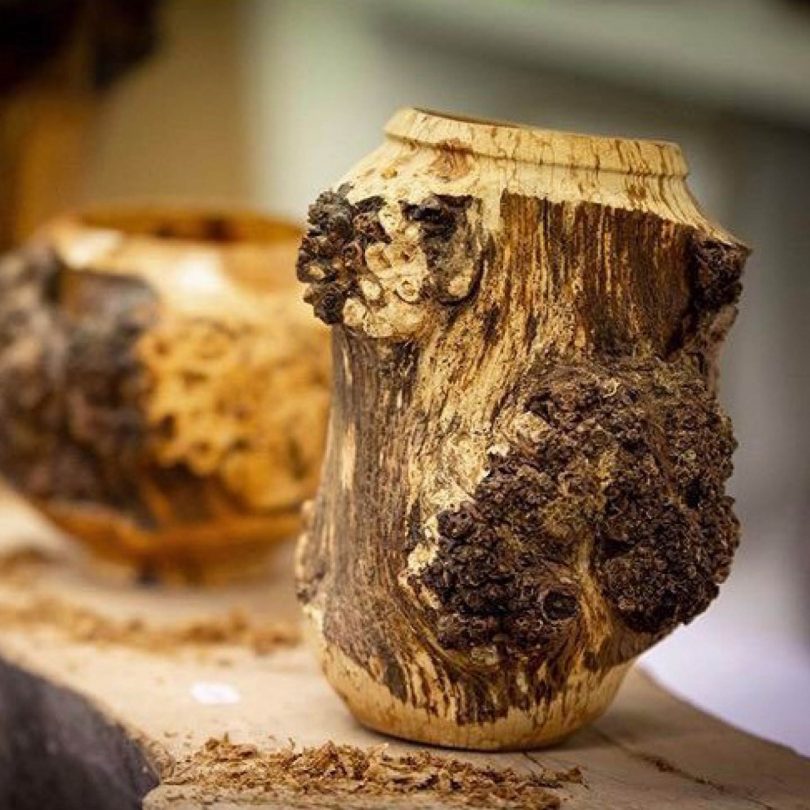
What inspired this project/product?
Being a lover of nature inspires me. Growing up in Greenwich, I was fortunate enough to have Greenwich Park just around the corner from home. The park has always been a peaceful haven for me – there is something about walking, thinking, talking with friends, living in the present moment and appreciating my surroundings. I find nature quite magical – can you imagine if trees could talk? The stories they would tell, the history they have lived through…
My cultural identity is another strong influence on my work – it has enabled me to be bold, to dare to break the mold, and to be authentic in my work. I also hope my audience can see the influence of African art in my work aesthetically.
What waste (and other) materials are you using, how did you select those particular materials and how do you source them?
The majority of the wood I used is sourced from Woodlands Farm in Shooters Hill. They have tree surgeons who remove wood that has naturally fallen. It’s a magical moment when I rummage through the woodpile and wait for the wood to speak to me, as I try to imagine what I could do with each piece and the shapes I could make to accentuate certain aspects of the wood. It’s a patient approach as I forage through the wood logs, which are most likely to be cut down into square logs and used as firewood otherwise.
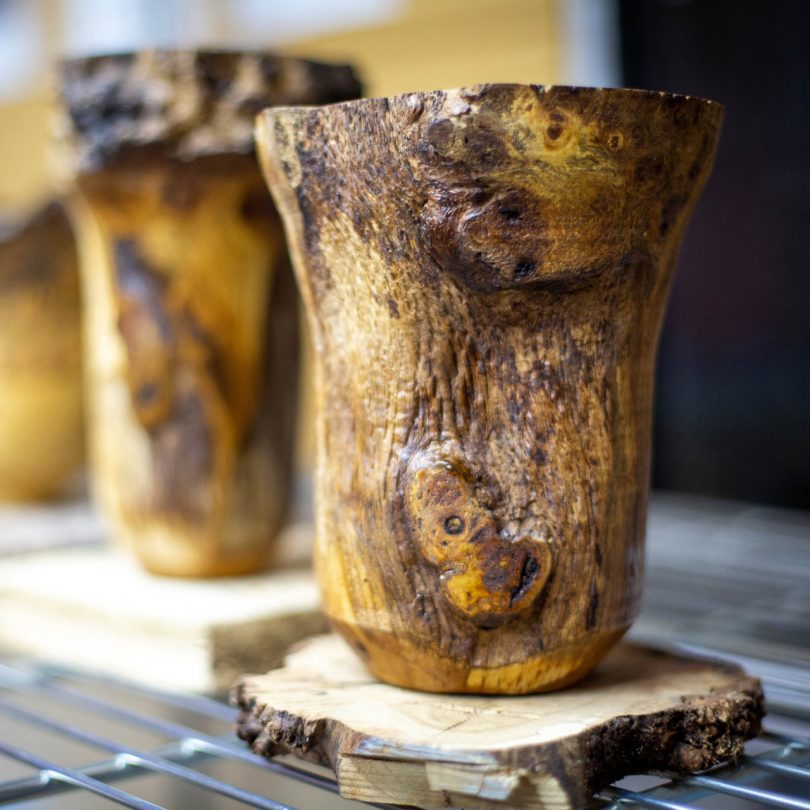
When did you first become interested in using waste as raw material and what motivated this decision
We live in the ‘Amazon era.’ We order things and they come straight away without a thought. Going to the woodlands farm instead of going to a timber shop where the timber has been seasoned and cleaned up – seeing the raw wood in its natural state really made an impression on me; this wood has the potential to have a second life and deserves to be used effectively, rather than merely being used as firewood which eventually diminishing into ashes.
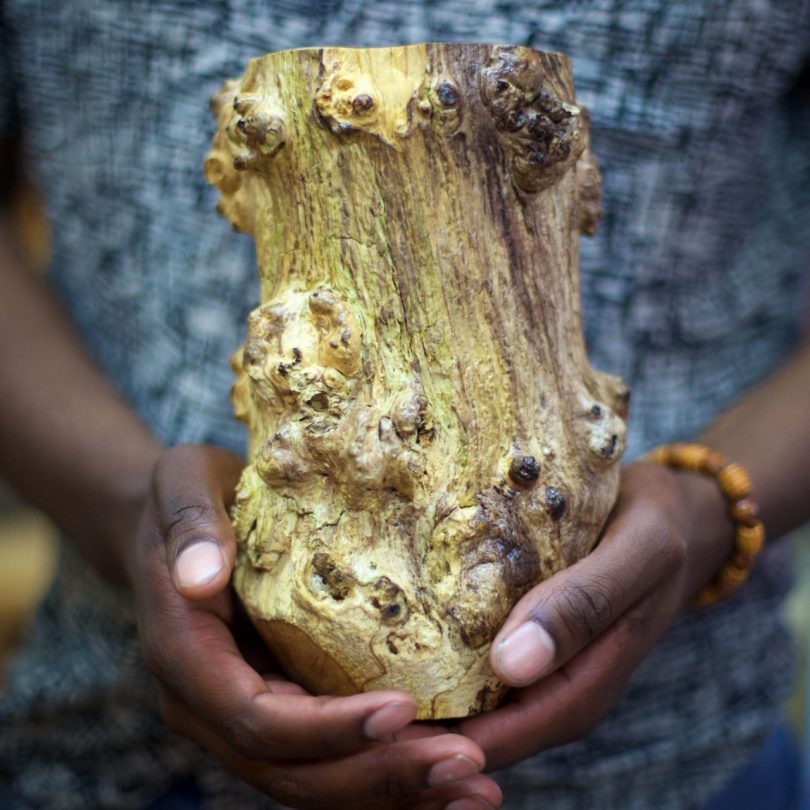
What processes do the materials have to undergo to become the finished product?
My making process starts from the moment I am at the Woodlands Farm, when I envisage the shapes I could create as I observe the natural features of the wood. The making process proper ultimately begins when I start to carve into the wood and it reveals itself to me, it’s like an egg hatching – it’s a delicate and slow process. It’s a collaboration between me and the wood as I use bowl gouges and chisels. It’s a therapeutic process as I carve on my lathe (a union graduate lathe) and the wood reveals itself to me; it could be a detail, a knot, or a transition in tone that catches my attention. Instinctively, I allow the detail of the wood to dictate my design as I simply aim to enhance features. Once I am satisfied with the shape of the wood, I hollow out the inside. It can be an intense process as I thin the walls to my vessel – it’s a bit like grinding into concrete if it’s seasoned wood, whereas it’s like carving into clay if it’s green wood which has been freshly cut. The sanding stage is a slow and gradual process. I see sanding as quality control it’s a time to observe and remove scratches and mistakes. Depending on what I am doing, I may burn the surface of the wood or just leave it as it is. The most frequent question I get is ‘how do I know when to stop?’. It’s intuition, you just know. It’s like in Forrest Gump. Forrest starts running after his heartache with Jenny, he keeps running and gets to the point where people jog along with him, and then suddenly he just stops jogging; he is satisfied and knows he’s done enough. It’s a similar feeling when it comes to my work, once I am satisfied, I add a couple of coatings of Danish oil and it’s finished.
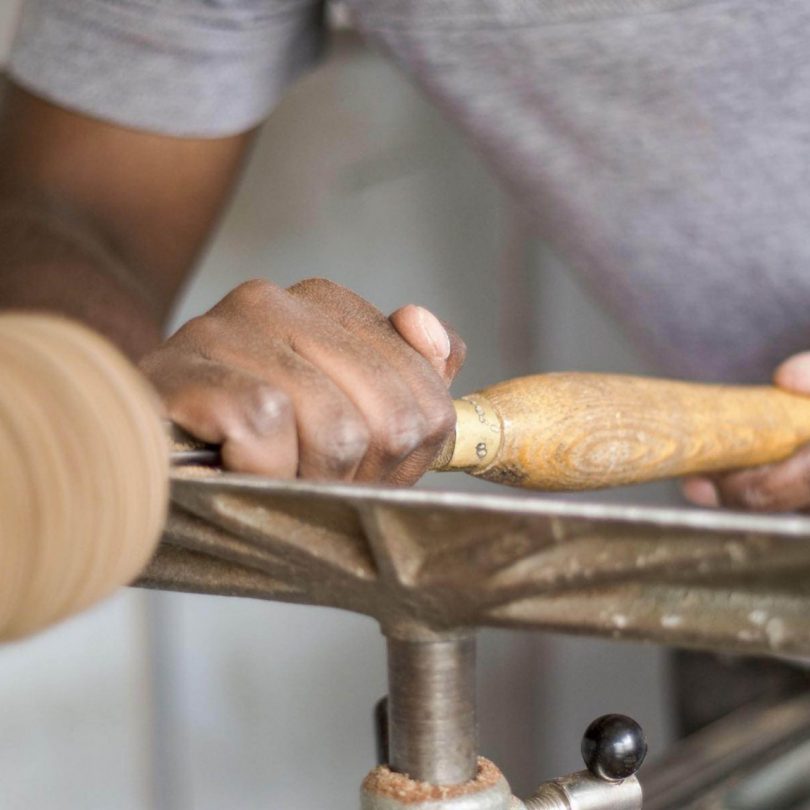
What happens to your products at the end of their life – can they go back into the circular economy?
The great thing about wood is that it’s quite a tactile material, especially if it’s hardwood. Of course, it is biodegradable, but I do romanticize the idea that my work could become a family heirloom, passed down from one generation to the next. I like to think it’s part of my legacy, that when I die a part of me lives on through my work. I have also been looking into how I can close the circle – my aim is that with every vessel I make, I will plant a tree to leave something for the future generations of wood makers.
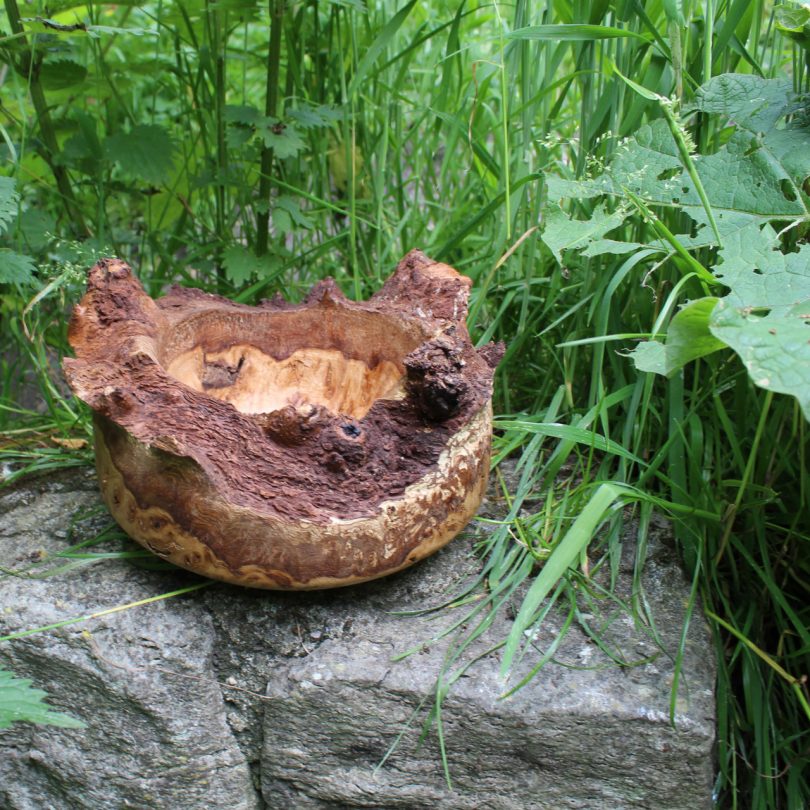
How did you feel the first time you saw the transformation from waste material to product/prototype?
I was amazed by the details of the wood. It made me see the wood in a whole different light and I had an eagerness to work with the material again to explore further and push its limits. I was quite excited and I spent a lot of time observing the wood – touching it like a child who receives a toy for the first time, just playing with the material.
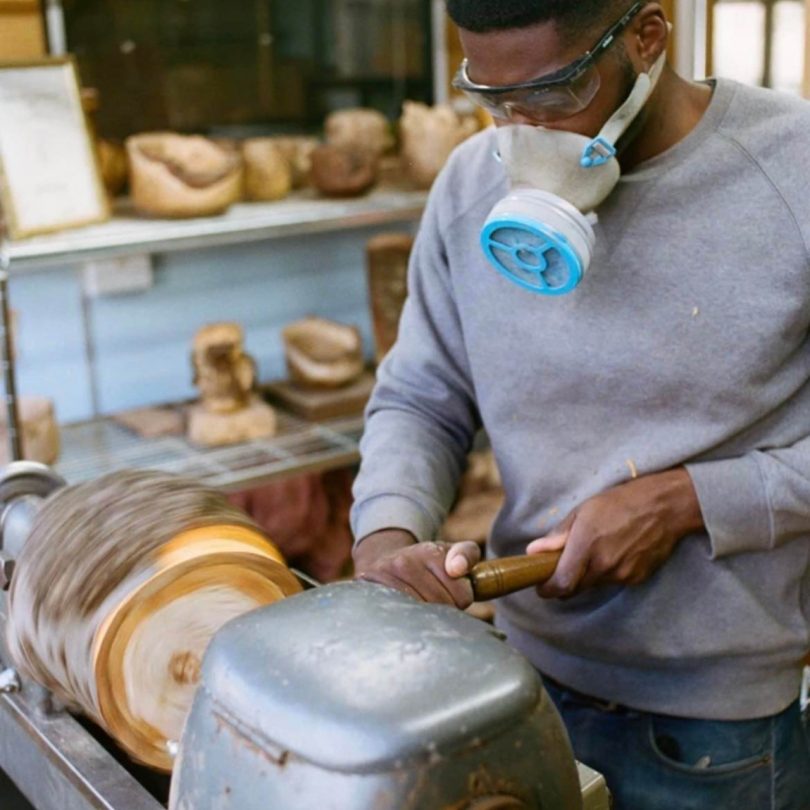
How have people reacted to this project?
I love it when people react to my work and understand the origins of the material, they compare it to certain details they may have seen on trees and that truly makes me happy. To know that something I have created has made someone appreciate nature, trees, bark and branches – all things they see every day in their life but may not have taken much notice of before, makes me very happy.
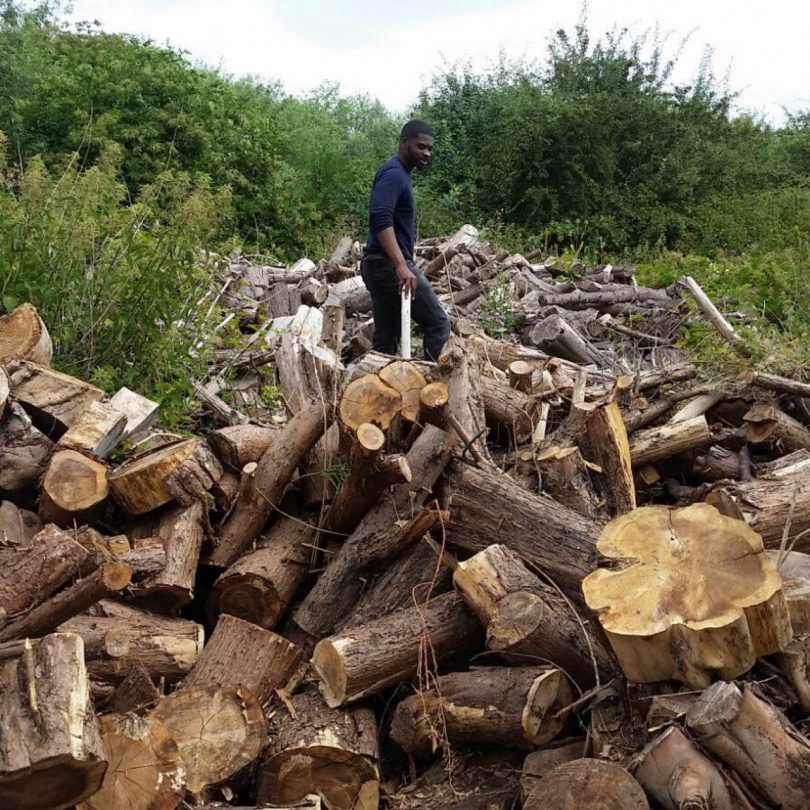
How do you feel opinions towards waste as a raw material are changing? What do you think the future holds for waste as a raw material?
I believe people are more willing and open to using waste; experimenting and finding solutions. People are certainly open to learning about how I use waste and understanding how even this stunning wood is waste, essentially. There is a curiosity about raw materials and a desire to change views and give wasted materials a second or third life. Ultimately the future is bright and it’s important those of us who who work with waste materials continue to do so; in order to educate and inspire the next generation of makers.
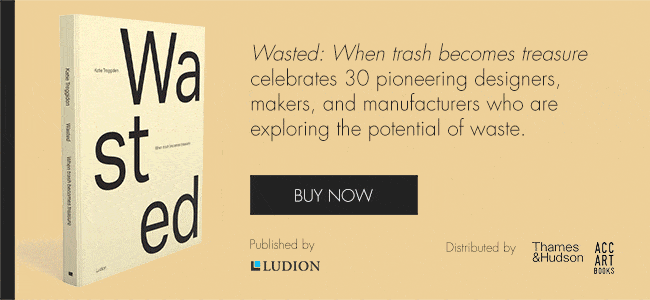

Katie Treggiden is a purpose-driven journalist, author and, podcaster championing a circular approach to design – because Planet Earth needs better stories. She is also the founder and director of Making Design Circular, a program and membership community for designer-makers who want to join the circular economy. With 20 years’ experience in the creative industries, she regularly contributes to publications such as The Guardian, Crafts Magazine and Monocle24 – as well as being Editor at Large for Design Milk. She is currently exploring the question ‘can craft save the world?’ through an emerging body of work that includes her fifth book, Wasted: When Trash Becomes Treasure (Ludion, 2020), and a podcast, Circular with Katie Treggiden.
You can follow Katie Treggiden on Twitter, Instagram, and Linkedin. Read all of Katie Treggiden’s posts.
